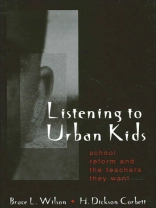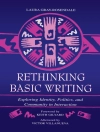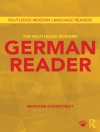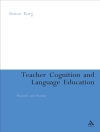According to the many student voices in this book, urban middle school students want teachers who ‘stay on them’ to complete their work, maintain orderly classrooms, give them the extra help they need to succeed, explain their work clearly, draw on a variety of teaching strategies, and make their work relevant and meaningful. This book, rich in detail, brings these inner-city students’ perspectives to life and issues a compelling call for urban school reform that actually touches students’ daily lives.
Jadual kandungan
One
INTRODUCTION
The Reform Context
Students as Useful Windows through Which to View Reform
Overview of the Study and Its Participants
The Student Sample and Interview Strategy
The School Sites
Other Considerations in Reading This Book
Two
CHANGES IN STUDENTS’ SCHOOL LIVES OVER THREE YEARS
Changes in Plans for the Future
Changes in the Schools
More and/or Harder Work
Different Student Behavior
Small Learning Communities
Changes in Classroom Experiences
Multiple or Long-term Replacement Teachers
Disruptive Classrooms
‘Support Scarce’ Classrooms
A Need to Scale Up within Schools
Three
PEDAGOGICAL, CONTENT, AND CLASSROOM ENVIRONMENT DIFFERENCES WITHIN AND ACROSS FIVE SCHOOLS
Pedagogical Differences—The Case of Science
Content Differences—The Case of English
Classroom Environment Differences—Two Examples
School #1: Two Teachers on the Same Team
School #4: A Comparison between Students’ Initial Teacher and a Replacement
Students Focused on Instructional, Rather Than Personal, Style
Four
THE TEACHERS STUDENTS WANTED
Three Teachers Students Praised
Qualities Students Wanted Their Teachers to Have
Valued Teachers Pushed Students to Complete Their Assignments
Valued Teachers Maintained Order in the Classroom
Valued Teachers Were Willing to Help
Valued Teachers Went to Great Lengths to Explain a Topic Until
Everyone Understood It
Valued Teachers Varied Classroom Activities
Valued Teachers Respected Students, Related to Them, and Tried to
Understand Their Worlds
Behind the Actions: The Student–Teacher Relationship
Five
SPREADING THE POCKETS OF SUCCESS
A Brief Description of School #6
Students’ Aspirations and Teachers’Preferences
Pedagogical Differences—The Case of Science
Content Differences—The Case of Writing and English
A Note on Mathematics
Classroom Environment Differences
Evidence of School Effects
Students’ Perspectives on School #6
Student Performance Data
Student Comparisons of School #6 with the Other Study Schools
Student Talk and School Differences
Six
STUDENTS AND REFORM
Making Reform Noticeable
Focus Professional Development on Adults’ Underlying Beliefs about
a School’s Role in Supporting Student Learning Rather Than
Discrete ‘Best Practices’
Emphasize the Quality of the Relationships between Teachers
and Students
Changes in Student Performance Standards Must be Accompanied by the
Creation of Standards for Pedagogy, Content, and Classroom Environment—
and the Professional Development Necessary to
Implement Them
Connect Changes in Standards to Grades, Not Just to Performance on
Large-scale Assessments
Create ‘Extra Help’ Situations That Encompass All Students Who Need It, Not
Just Those Students Who Avail Themselves of It
Extend Extra Help Beyond School Work to How to Succeed in the Future
Reforming with, Not for, Students
References
Appendix: Student Interview Protocols
Author Index
Subject Index
Mengenai Pengarang
Bruce L. Wilson and H. Dickson Corbett are both independent educational researchers and coauthors of
Testing, Reform, and Rebellion. Wilson is coauthor of
Mandating Academic Excellence: High School Responses to State Curriculum Reform, with Gretchen B. Rossman and
Successful Secondary Schools: Visions of Excellence in American Public Education, with Thomas B. Corcoran; and Corbett is coauthor of
School Context and School Change: Implications for Effective Planning, with Judith A. Dawson and William A Firestone and
Change and Effectiveness in Schools: A Cultural Perspective, with Gretchen B. Rossman and William A. Firestone, also published by SUNY Press.












